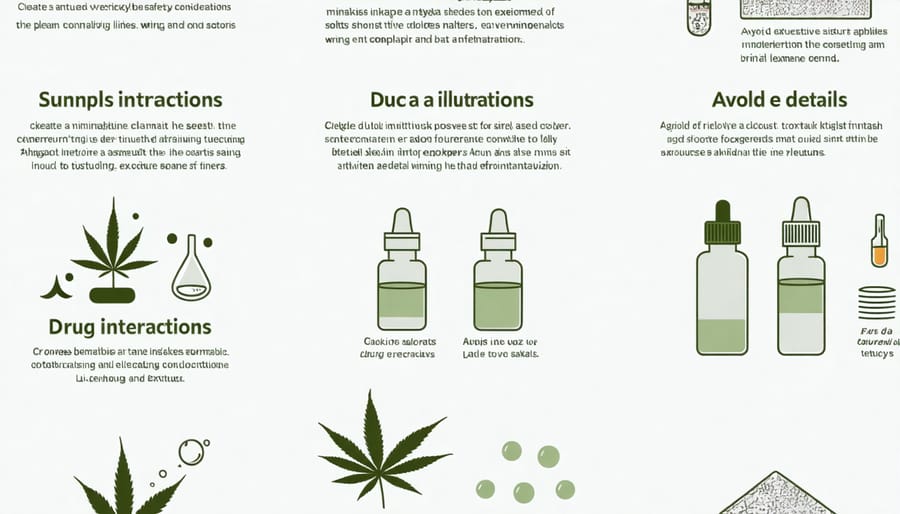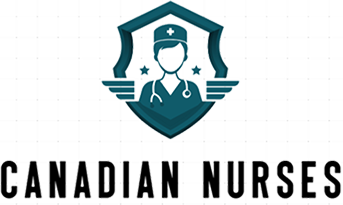The rising prevalence of cannabis use, including medical products like delta 9 gummies, has fundamentally transformed nursing practice across Canada’s healthcare landscape. Nurses now face unprecedented challenges in patient assessment, medication management, and care delivery as cannabis legalization reshapes traditional healthcare protocols. This evolution demands a thorough understanding of cannabis pharmacology, legal frameworks, and evidence-based practices to ensure safe, effective patient care.
The intersection of cannabis use with various medical conditions, drug interactions, and treatment plans requires nurses to develop new competencies while navigating complex regulatory requirements. As frontline healthcare providers, nurses must balance patient autonomy with professional obligations, particularly when addressing cannabis use in clinical settings. This reality has sparked significant changes in nursing education, policy development, and clinical practice guidelines across Canadian healthcare institutions.
Understanding the impact of cannabis on nursing practice is no longer optional but essential for providing comprehensive, patient-centered care in today’s evolving healthcare environment. This careful examination of cannabis’s influence on nursing practice reveals both challenges and opportunities for advancing professional nursing care in Canada.
Understanding Cannabis in Clinical Settings
Medical Cannabis Fundamentals
Cannabis contains over 100 cannabinoids, with THC (tetrahydrocannabinol) and CBD (cannabidiol) being the most well-studied compounds. While THC is primarily responsible for psychoactive effects, CBD offers therapeutic benefits without intoxication. These compounds interact with the body’s endocannabinoid system, which plays a crucial role in maintaining various physiological processes.
Medical cannabis has shown promise in treating several conditions that nurses frequently encounter in their practice. These include chronic pain management, chemotherapy-induced nausea and vomiting, muscle spasticity in multiple sclerosis, and symptom management in palliative care. The medication can be administered through various methods, including oils, capsules, dried flower for vaporization, and sprays.
Understanding dosing principles is essential for nurses, as cannabis affects individuals differently based on factors such as age, weight, and previous exposure. Start-low-go-slow is the recommended approach for dosing, particularly with new patients. Different strains and ratios of THC to CBD produce varying therapeutic effects, allowing for personalized treatment plans.
Nurses should also be aware of potential interactions with other medications and common side effects, including dizziness, dry mouth, and changes in appetite or mood. This knowledge enables them to provide informed care and education to patients using medical cannabis.

Legal Framework for Healthcare Providers
The legal landscape for healthcare providers managing cannabis-related care in Canada has evolved significantly since the Cannabis Act came into effect. Nurses must navigate their nursing responsibilities within the framework established by federal and provincial regulations, while adhering to professional standards set by their regulatory bodies.
Healthcare providers must understand both the Medical Cannabis Program and recreational cannabis regulations. The College of Nurses of Ontario and other provincial regulatory bodies provide specific guidelines for nurses regarding cannabis care, including assessment, documentation, and patient education requirements.
Key legal considerations include maintaining appropriate documentation of cannabis use in patient records, understanding consent requirements for medical cannabis, and recognizing the boundaries of professional practice when discussing cannabis with patients. Nurses must also be aware of workplace policies regarding cannabis use and impairment, both for patients and healthcare workers.
Provincial regulations may vary in terms of distribution, possession limits, and workplace safety requirements. Healthcare providers should regularly review their facility’s policies and stay current with regulatory updates to ensure compliance while delivering safe, effective patient care.
Clinical Assessment and Patient Care

Assessment Protocols
Effective assessment of cannabis-using patients requires a comprehensive approach incorporating both standardized screening tools and essential nursing skills. The CAGE-AID questionnaire, adapted for cannabis use, serves as a reliable initial screening tool, focusing on four key areas: attempting to cut down, feeling annoyed by criticism, feeling guilty, and using cannabis as an eye-opener.
For more detailed assessment, nurses should utilize the Cannabis Use Disorder Identification Test (CUDIT-R), which evaluates frequency, patterns, and potential problematic use. This tool helps identify patients who may require intervention or specialized support services.
Physical assessment should include vital signs monitoring, particularly heart rate and blood pressure, as cannabis use can affect cardiovascular function. Nurses should also assess for signs of cannabis hyperemesis syndrome, characterized by cyclic vomiting and abdominal pain.
Mental status examination is crucial, focusing on:
– Level of consciousness and orientation
– Short-term memory function
– Thought processes and perception
– Mood and affect
– Risk assessment for substance dependence
Documentation should be objective and non-judgmental, recording specific observations rather than assumptions. Include frequency of use, method of consumption, and any reported medical or recreational purposes.
Regular reassessment is essential, particularly for patients using cannabis for medical purposes, to monitor effectiveness and potential side effects. This information helps develop appropriate care plans and ensures patient safety while maintaining therapeutic relationships.
Documentation Requirements
Proper documentation of cannabis-related patient care is crucial for maintaining high standards of nursing practice and ensuring legal compliance. As documentation requirements in healthcare continue to evolve, nurses must be thorough and precise when recording cannabis-related information.
When documenting cannabis use, nurses should record:
– The type and form of cannabis being used (medical or recreational)
– Frequency and method of consumption
– Current prescription details for medical cannabis
– Any observed effects or side effects
– Patient education provided
– Treatment plans and interventions
– Risk assessments and safety considerations
It’s essential to use objective language and avoid stigmatizing terms when documenting cannabis use. Instead of writing “patient is a marijuana user,” opt for neutral phrasing such as “patient reports using cannabis for pain management.”
For medical cannabis patients, include:
– Authorization details
– Licensed producer information
– Dosage and administration instructions
– Treatment goals and outcomes
– Any contraindications with other medications
Document all patient education provided, including:
– Safe storage and handling
– Potential drug interactions
– Signs of adverse effects
– Harm reduction strategies
– Legal considerations
Maintain clear, concise records that support continuity of care while protecting both patient privacy and professional accountability. Regular review and updates of documentation practices ensure compliance with institutional policies and regulatory requirements.
Patient Education and Support
Risk Communication
Effective risk communication is crucial when discussing cannabis use with patients. Nurses must be prepared to address potential drug interactions, particularly with medications commonly prescribed for chronic conditions. Cannabis can interact with several medication classes, including anticoagulants, antidepressants, and certain cardiac medications, potentially altering their effectiveness or increasing side effects.
When discussing cannabis with patients, nurses should maintain a non-judgmental approach while clearly communicating evidence-based information about risks. Key areas to address include potential cognitive impairment, respiratory concerns with smoking, and the importance of secure storage to prevent accidental ingestion by children or others.
Special attention should be given to vulnerable populations, such as pregnant women, adolescents, and elderly patients with multiple medications. For example, older adults may experience increased risk of falls or confusion when using cannabis alongside other medications that affect cognitive function.
Documentation is essential when discussing cannabis use and potential risks with patients. Nurses should record all educational interventions, risk assessments, and patient responses in clinical notes. This helps ensure continuity of care and protects both the patient and healthcare provider.
Consider developing standardized risk assessment tools and educational materials that reflect current Canadian guidelines and research. These resources can help facilitate consistent, evidence-based discussions about cannabis use and potential interactions across healthcare settings.

Safe Use Guidelines
When educating patients about cannabis use, nurses should emphasize several key guidelines to promote safe consumption. First, patients should be advised to start with low doses and gradually increase as needed, particularly when trying new products or delivery methods. This “start low, go slow” approach helps minimize adverse effects and allows patients to gauge their individual tolerance levels.
Patients must be educated about proper storage, keeping cannabis products in child-resistant containers and storing them in secure, cool, and dry locations away from children and pets. Clear labeling of products is essential, particularly when multiple forms or strengths are present in the household.
For those using cannabis for medical purposes, maintaining a usage diary is recommended to track effectiveness, side effects, and patterns of use. This information helps healthcare providers optimize treatment plans and identify potential concerns.
Nurses should emphasize the importance of avoiding cannabis use while operating vehicles or machinery, during pregnancy or breastfeeding, and in combination with alcohol or other medications without medical supervision. Patients should also be informed about recognizing signs of dependency and when to seek professional help.
It’s crucial to discuss smoke-free alternatives, such as oils or edibles, and proper ventilation when smoking is the chosen method. Patients should understand the delayed onset of effects with edibles to prevent overconsumption and potential adverse reactions.
Professional Development and Resources
Continuing Education Options
As the cannabis landscape evolves in Canadian healthcare, nurses have access to various professional development resources to enhance their knowledge and competency in cannabis-related care. The Canadian Nurses Association offers specialized certification programs focusing on medical cannabis nursing, covering topics from pharmacology to patient assessment protocols.
Provincial nursing associations frequently organize workshops and webinars addressing cannabis-specific challenges in clinical settings. These sessions typically include case studies, practical scenarios, and updates on emerging research and best practices.
Many hospitals and healthcare facilities have developed in-house training programs, often collaborating with cannabis clinics and licensed producers to provide hands-on experience. Online learning platforms offer self-paced courses accredited by recognized nursing bodies, allowing practitioners to balance education with their clinical responsibilities.
Nurses can also participate in interdisciplinary conferences and symposiums that bring together healthcare professionals, researchers, and industry experts. These events provide valuable networking opportunities and expose nurses to diverse perspectives on cannabis therapeutics and patient care approaches.
For those seeking academic advancement, several Canadian universities now offer certificate programs and continuing education units specific to cannabis nursing care.
Support Networks
Professional support networks play a vital role in helping nurses navigate the complexities of cannabis-related patient care. The Canadian Nurses Association (CNA) offers comprehensive resources, including evidence-based practice guidelines and continuing education modules specifically focused on cannabis care. Regional health authorities across Canada have established mentor programs, connecting experienced nurses with those seeking guidance in cannabis patient management.
Many hospitals have implemented peer support groups where nurses can share experiences, discuss challenging cases, and develop best practices for cannabis-related care. These forums provide safe spaces for nurses to address concerns and learn from colleagues who have successfully integrated cannabis considerations into their practice.
Online communities and professional forums dedicated to cannabis nursing have emerged, offering real-time support and knowledge sharing. The Cannabis Nurses Network of Canada facilitates regular webinars, workshops, and conferences, enabling nurses to stay current with evolving cannabis healthcare practices.
Local nursing chapters often partner with cannabis clinics and licensed producers to organize educational sessions, helping nurses build confidence in addressing patient questions about cannabis use. These partnerships ensure nurses have access to current, evidence-based information while fostering professional relationships within the cannabis healthcare community.
The evolving landscape of cannabis legalization in Canada continues to shape nursing practice in profound ways. As we’ve explored throughout this article, nurses face both challenges and opportunities in adapting to this new healthcare reality. The integration of cannabis-related care into nursing practice requires ongoing education, clear communication protocols, and a balanced approach to patient care.
Moving forward, nurses must remain committed to evidence-based practice while maintaining an open mind about emerging research on cannabis therapeutics. The development of standardized assessment tools and care protocols will be crucial in ensuring consistent, high-quality care across healthcare settings. Professional nursing organizations and regulatory bodies are expected to continue refining guidelines and best practices as more clinical evidence becomes available.
For Canadian nurses, staying informed about cannabis-related healthcare developments remains essential. This includes understanding both the therapeutic potential and possible risks of cannabis use, as well as keeping current with evolving regulatory frameworks and institutional policies. The future of nursing practice in this area will likely see increased specialization and the emergence of cannabis-specific nursing roles.
Success in this evolving field will depend on maintaining professional competency through continuous learning, fostering open dialogue with patients, and collaborating effectively with interdisciplinary healthcare teams. As frontline healthcare providers, nurses will continue to play a pivotal role in shaping cannabis-related healthcare delivery and patient education in Canada.

